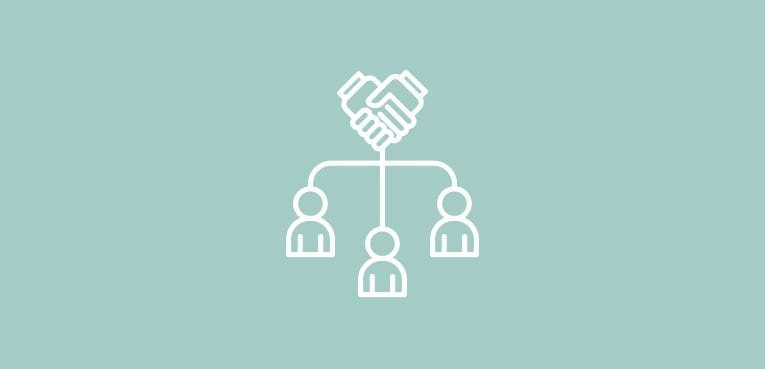Design Manager or Individual Contributor?
Making a conscious choice with your career path
Making a conscious choice with your career path
Many designers hunger for career development, however progression up the career ladder in most companies means becoming a line manager or head of department.
But this has its downsides, as well as its upsides.
Many or even most designers will find eventually some hard decisions an even harder experiences when choosing between becoming a manager or remaining a practitioner.
But aren’t we all just lucky to have a job right now?
I know, we’re in the middle of a design industry implosion, where most of us feel happy just to have a job, but I’m finding that a lot of my mentees are taking this opportunity to reflect on their career paths and what they consciously do and do not want to be doing.
I’ve been involved in many conversations as well as chat groups recently where practitioners looking for the next role are having to question job descriptions, titles and requirements like never before, as they work out which jobs they’re most able to compete for.
Clearly this is also an article more focused at perms rather than freelancers. Most contractors I’ve spoken with don’t even know the term “individual contributor” for the same reason that people standing at the eye of a storm can’t see the weather.
Manager, IC or… something else?
First, let’s define what we’re talking about in terms of job roles and responsibilities.
Manager
Your actual title here could be something like Design Manager, Team Lead, Head of Department. Essentially your job is to look after other designers, usually including mentoring, training, work assignment, oversight and sign off, and all the lovely HR things like performance reviews and approving holidays and promotions.
Managers of large teams (roughly if more than 10 people) usually do not have live design work that they are solely responsible for.
In fact some design managers have never been designers which I’m sure can be a thing, but I’ve had some bad experiences and I know from extensive conversations with other designers that I’m not the only one.
Individual contributor (IC)
The IC has no line management responsibilities but still progresses within the organisation. Their progression is therefore generally based on individual skills, achievement and contribution to various KPIs rather than the performance of others.
Some organisations have a “twin track” career path in place to support this but many don’t, therefore it’s worth finding this out before you join a company if it’s your preferred route.
The upsides of this role are obvious – No painful HR tasks and no responsibility for other people. The downside of this is that you miss the opportunity to develop your people skills. In my perm career, I was essentially forced to take on a managerial role against my will and it’s taught me some incredible skills, not to mention patience with other people.
However a watch-out; I’ve seen people take IC roles and those roles have strangely morphed into line management within a couple of years at the organisation. In one scenario, individual KPIs were so impossible to achieve that the person was seemingly manipulated back into a more traditional role. Therefore it’s worth being super-clear at interview or during career conversations if your desire is to never get involved in management, so that expectations are clear on both sides.
Practitioner lead
This is often the most demanding of senior design roles. In this role you are both a line manager and a practitioner with your own projects and stakeholders. This is a heck of gig.
Most companies don’t have practitioner leads for teams of more than 10 people, but even overseeing 4 or 5 people it’s a stretch — because as you’ve probably inferred from the two descriptions above; it’s two jobs in one. It’s literally twice the work. And you rarely get paid twice for your skill set and workload.
Practitioner lead is literally two jobs in one
Many people take this role because they don’t want to give up their contribution or become distanced from the craft, but I believe there have to be strong boundaries in place to avoid being massively overworked.
I have personally seen many excellent managers and leaders of humans revert to IC status, often as a contractor, simply due to burnout and a deep sadness at being constantly pulled away from design work and daily team collaboration to deal with management politics. Or worse, having the expectation you’ll deliver high quality work (because you’re head of department) in half the time (because you’re head of department).
These are the three main more senior career paths to choose from as a perm UX, product or service designer with some experience under your belt, if you’re going to continue in a permanent role.
But wait there’s more…
Watch out for the fake ‘department head’ roles
Many of the Senior UX Designers I’ve mentored have at one time or another gotten very excited about applying for a Head of or Lead Designer role, with a team working into them for the first time. And rightly so. If you’re actually ready it can be a great move.
However, notwithstanding the individual’s readiness (or not) to progress, the question I always ask is — what’s the current team headcount, and what’s the hiring budget?
What’s the current team headcount, and what’s the hiring budget?
Why am I asking this?
I always ask this because there is a style of "leadership” design roles that I see coming up timing again on LinkedIn et cetera, which are essentially a glorified team-of-one who in an organisation where they are going to work be worked to death.
I believe that not many people, if they understood the reality of these roles, would be as excited to apply.
The characteristics of this type of role, if you are trying to detect them in the wild are as follows:
The role is often a first hire in UX/Product Design for an organisation
There are no other UX, UI, research or any other design team members currently
They promise to build out your team once you join, but will not commit to a specific headcount budget during the interview process
They expect you to evangelise for UX within the business in order to grow your remit and reputation
They also expect you to do all the actual UX design/research work
The salary is below that of a (5+ head count) Head of Department, but probably more attractive than your current Senior-level role
The reality of this role is often that the organisation is trying to hire one person, on the cheap, in the hope that they will both do all the work, and create justification for the existence of a department at some point in the next several years.
The reason they do this is usually money — they don’t have any, they’re replacing an agency or external resource and or a lack of ability to sell design internally themselves.
Keep reading with a 7-day free trial
Subscribe to It Depends... to keep reading this post and get 7 days of free access to the full post archives.






